Understanding ADHD: A Neurodevelopmental Challenge
Attention-Deficit/Hyperactivity Disorder (ADHD) in children is a complex neurodevelopmental condition affecting millions globally. Characterized by symptoms of inattention, hyperactivity, and impulsivity, ADHD presents unique challenges in home, school, and social environments. Early recognition and comprehensive management are crucial for improving children's development and quality of life. This article consolidates guidance from pediatric experts, clinical practice guidelines, and evidence-based research to support parents, caregivers, and educators in managing ADHD across childhood.
<!-- VIDEO:eyJsaW5rIjoiaHR0cHM6Ly93d3cueW91dHViZS5jb20vd2F0Y2g/dj1RY3N1Tl83WHRIdyIsImltYWdlVXJsIjoiZGF0YTppbWFnZS9qcGVnO2Jhc2U2NCwvOWovNEFBUVNrWkpSZ0FCQVFBQUFRQUJBQUQvMndDRUFBa0dCd2dIQmdrSUJ3Z0tDZ2tMRFJZUERRd01EUnNVRlJBV0lCMGlJaUFkSHg4a0tEUXNKQ1l4Sng4ZkxUMHRNVFUzT2pvNkl5cy9SRDg0UXpRNU9qY0JDZ29LRFF3TkdnOFBHamNsSHlVM056YzNOemMzTnpjM056YzNOemMzTnpjM056YzNOemMzTnpjM056YzNOemMzTnpjM056YzNOemMzTnpjM056YzNOLy9BQUJFSUFGTUFsQU1CSWdBQ0VRRURFUUgveEFBYkFBQUJCUUVCQUFBQUFBQUFBQUFBQUFBQUFRTUVCUVlIQXYvRUFFSVFBQUlBQkFNRUJnUUtDUVVBQUFBQUFBRUNBQU1FRVFVU0lRWXhRVkVUSW1GeGM3RVVKWUdoQnhVak1sU1JrOEhoOERNMFFsSlRZcExSMGhZa1kyUnkvOFFBR2dFQUFRVUJBQUFBQUFBQUFBQUFBQUFBQUFJREJBVUdBZi9FQUNrUkFBSUNBZ0VEQWdVRkFBQUFBQUFBQUFBQkFoRURFaUVFTVZFaVlUSkJjZkR4QlJPQmtlSC8yZ0FNQXdFQUFoRURFUUEvQU5wbWhnMWEzK2EwR2FNOWp1ZXR3NmRTMGM4eVoweGxBY2NCbUYvZEZ5bzhOMWRGQm15U1U0eFRxMlhqWXBUSUp4bU1aYXlkWGQrcW85cGh4YTZXNkIwdXlrWEJGaUNJejAyVk1XYmZvWmJtYWxxbDFhNEJ0Y0ZkT1l2OVVTNk9jc3ZEYVJwckRwR2xLV0Npd0JzTkladzVZNUphMFBkVml6WWNieUpyL1BQOWw2R3VMd3VhSTZzQ29QWkM1b2NvVW53UDVvTTNiREdhRE5CUjJ4L05CbTdZWXpRRnRJS0N5d1paTlBaWjZ2TW1rQXNpdGxDOWhOanJDZFBTL1JIKzIvQ0djVFByQ3A4UXhHelFpTUxWc1U1VTZSUDZlbCtpUDl0K0VVMkk3WGJQMEV4cFV4Smt5YW56a2t6QzFqeUp5MkgxeFM3WGJRZkYwZzBsSTQ5TG1EVnY0UzgrL2xHVXBhT2tlbVF6aTA1bjFTU2dOejMyMTdZaVo4eWc2aVNzR0Z6VnlObzN3aWJQSVV6NGRpQ3F4NnpYQkNEbWJmZGVORGgrTFlWaVZNS2loUVRwUjB6SlAzSGtlcm9ZNURPd3VwRHROTkRNazB5YmlVeTM5a0pnT05mNmZ4a0ZXUG9sUmxNNU9GaisxM2pXRzhmVVhLcERtVHBxVm83UDA5TDlFZjdiOElWVFN6bUNCSGtNZEZZdm1XL2JwcDN4QURnaTRPaDNRak4xVDNSWWFFRlQ4a2x3eU95T0xNcHNRZUJnaGNTYjFoVStJM25CSEUrQWFSQXpSbXFhVFR6MlFuRUVseldZM2xsU1NEYzJIa1l2YzBaMDRKV0NjWmlUcFNtNUtuTWJqM1JMajJkT2lCbld6aTZzbTlGSlplazlQV1dUcE1SNUxYME51Ni8zUkZxWk5PbFAxY1RrczB0TkplVmdUcDI5M3ZFU0RRMXZDb3NRTGZwVC9qRU9iZ2RaTllzOCtTVGExeXgzY09FTlljY295dVRYOGZnN25uS2NOVW0vdjZtbmt0OGpMLzhBSThvOTVvalMrckxSVHdVQ1BXYUZOY2o2ZkEvbWd6UXhtZ3pSeWdzZnpRWm9ZelFGdElLQ3l4eFJ2V1ZUNGplY1YxZldMUlVVNnFjRmhLUXRsSEhzaVhpemVzNnJ4Vzg0eWUyTmNWd3lvcEpkMUxTN3U5dEFPUTdZYWxMVEZmc094VzJTdmN4TlJYdmlWWGJNV3FxcWVxTmJkZG1Bc0J5QXNJNmxzaW1DNFpOOURseTNuVnpmT25ObFBzRmliQy9DT1c3RlM1VGJiWVlqaThsWnBJemJtWUtUOTN1anVjeHNPa1ZQU1NsbHJNUlJtbUFXQ2c4Q1l6MmFUczBXQ0NvcGRvTVRvWnZUVTZyT1poY05rbEVnSGpySEVjWlZseEdZRVl1cFlsRC9BQzMzUjF2QjVXRjR4UVZBcThrN0xPYVlUWUc1TjlRVDNudXZITk5vVmx0aTVlblhMS2tsdHh2Zjgyam1GOGlzOFhSMGZZL0ZCaU9DeXMxeE9rZ1M1aWszSUlHLzJ4ZHMzVk1jMStEdXVXVFcxS1RuSTZZTGtCN0x4ME5tNnA3bzBQVHozeHBzenZVUjB5TkZsaWplc3FyeFc4NElaeGR2V2xYNHJlY0xEa1BoUXpQNG1WbWVIQkxtRWdCR056YlFSRXpSTENWQTFNNVZzdHgxcjZleUhaY0NJOGlaWm44TjdkeDc0WG81dXZ5YjZiK3FZUUNlVkV3VGhtYmYxdGZ6eDdZSEZRdlNNSjk5NU5tT3RoL2FFWDdvVlM4QmxmaWpEUW5VVzNiNDlkRE5GN3BvT054YjY5MEJsMUFzb21XVkYwSk9YUWtmaHAzYUNQRENlcFp6TUZ3YmFFNjkzUDhBUEl3WGZ6UVV2QW9TWVNBRVlrNmJvR1YxWE1WT1huYlNCSmN3eXd3bjMweldCSks5L0xlZFlqbWU3TFlzYkhoQ2xiZkFsMHU0N21nTGFReG1nTGFRdlVUc1dlTU42MXEvRmJ6akxiVTByVk1rR1cyVWtGV043ZHZkd2pSNDAzcmVzOFp2T0tqRXFTVmlGSk1wNXBZQmhhNm14RU5TeDc0cTloMk9UWExmdWM5d3JFWkdHNHhodFpQSmNVYzM1UkJ5NCs0bjZvN1BUaEhrK2xVVFRLaWpxWmVkVmt6QUJyYzVocHJjRWIrVWNjMnV3NWNMcTZlYkxVaVhNbDlZcm91WWNQYUl1L2d0eFRFNWoxOURTVG1TbWxvSGxvUmRWWW5XM0srKzM5NHp2VTRYQ1hQeU5GMHVkU1NhN012V1BRMU5TWnpUcE1sa1lKS21NcDYzN3hZQWFDT1kxbFJKcWNacUpVaDJFbjVxTWVOdVB0amU0bmdtSTExWk1ldm5zVXQ4MGFBOWtZREY2QmFURm5WQ2JxYnRZNlhodkRWc1hua1NxTmxrejFaYjVrMU9VOHVVZFVvcWpwNkZITEt4eVdKVTZYR2tjaXdzUFZZakpseTBabkxYQ0tMNXZ6MngxZWxVeXFKRmRFUnduV0M3cjJpNC9UNHYxTXB1dmt1Qzd4aHZXdFo0emVjRU00MDNyZXQ4WnZPRWl3aEgwb2dTZnFaVjlKQ1p4RWZQQm5pVHFSN0pPZUV6amxFZlBCbmcxRFlrWnh5Z3ppOTdDSStlRFBCcUd4SUxnOElYUEViUEJuZzFDeVQwa0laa1I4OEJmUXdhaFpiNDY5c1pyZkdiempPNDVqc2pDWks1MTZTYzQ2a29HMSswbmdJdThmZTJOMTNqdDV4elBiR1pteGx6ZStTVW90eTNuNzRoNThqeFlGSmR5WGd4ckxtY1gyNUkySVlwaW1QVGhUdk1aa21OMUtlV0xLZnZQdGpvM3dZWUM5SFYxckIxYVRMVlpaY2NYTjJQdVpmZEdBMmRsNUhtMUdaRmVXaEM1eGNIOTYzYmErdmZ6anMrR1UveEJzNHBONWs1WlpjNTJONXMwam5yeDA3QmFNOTFFNVM3OTJYL0FFOEl4NVhDUldiWjRzdUVWRW1sRWtzczVDZWxCNG00c0IyV3ZlT09WRTlwdFJObkJjNVp0TDZkMGEvR3Nick1Sb3FxYlZ6MGVZcUJSa2xBcmw0YTd0YnVkT0lIUFhGQnJYUEVSM0hCUlFuSkxaaWlVd3N3MFljUndNWFdHYlUxK0hESldNMVZTZ2E1emQxRnVEY2ZiOVlpb0p0bEg4OXZkREZkK3J6UU9DeEloa2xCM0ZqTThjWnFwSTdiamoyeG10OFp2T0VoakhYdGpWZDQ3ZWNFYUxHdlF2b1ovSS9XeW82U0xLZ1doOUhjMXl6ZWtMaFJZbFRMVXFTSEEvYTFGclJTWisySmlZeFdTOUVuVzQ2SXZPL0xuRHVUSEpxb2pVSkpPMlByVHFjdHF5bk53ZHpiamE4TDZNbVc2MTFNVHhVc1FScHJwRVo4V3JIK2RQUFpvTkljK082NngrWEZ6dk9RZjJoT21YNy9BQWQyeGppVTJkOGlWRW85dHlCd3Q5ZC9kREU4Q1RNeWRJcjlxeDVmRTZxWUNIbWdndG1JeWl4TnN2a1REaTQxV3Exek5WdExkWlJIZGNpQnlnTkZ5UGJyQm5oaVpQYWJNYVk3WFpqY21QT2Z0aHhSOGpka25QQ0Y5REVmUDJ3aGU0SXZCb0ZsMXRBL3IydkgvTzNuSE1zU2NWT01UbmNGbGFkYXc0Z0czM1IwekZhZXB4S2RPeFREWkUycWxUL2xIU1FoZDVUMjZ5c28xMzNzYldJdEdOMmUyZXhrNDFUektyQThWVkZZdVM5Rk5VWEFKR3BXMiswVXZYeVg3Y0lvdU9najY1eUpPRkIwSnBpdVZKYnk1TXJxL1Bacmc2OHJHL2VmYU5oOEpPS3Vaa3ZDYUNYMG9VWG1aV3NNK2hDbXdKM1c5aElzY3dpcCtLY1psVnMrWk53dXNlYkxWUklkS09aY2dzQnEyUWl3SUJ0dnRjNlI2RkJqWG8wNHRodUltWXBjdk1OQy9TTmNFNk1CY25MbEY3alhUWGpVYTI3TFpTcU5HWngybGFrd2lZVE1CenpzcWhSYTZhRlNiaSt1cEZ0Mm80UmxsUFdBUERXTjF0aGcrS3pLV21wYVRBNjkxQkQza1VFM2tkRDFkK281OTUxdGxCczN0Rm1hK3orTVdQOEEwSnYrTUxRZ2haeDBxamtTVDlVTlZEWnFXYWVZTVdKMmIyaTZaMi8wL2pGaU5QOEFZVGY4WW40WnNiakZiTVZNUW9LckRhRUVla1ZWWkphU3N0T09YTUJtYmtvdWIyaFNUYm80MmtyWnY5b0h0amxmNDdlY0VRTVNyUlc0alZWU2pJczZhemhUdkFKMEVFYWVHSnFLc3pFNUp5YksrQ0NDSlF5RUVFRUFCQkJCQUFRUVFRQUVFRUVBSVZTVmJNckZXSEVHeGh3MUUrMzZlYjlvWUlJNDRyd0VHK1FGVlVmU0ozOVpnOUtxUHBFMytzd2tFR3NmQXV3RlRVVy9XSjMyaGhSVTFIMGlkOW9ZSUlOWStBc1gwbW8ra1R2dEREY3gzbU1HbU16a2JpeHVSQkJDYVNZUHNlWUlJSVVJUC8vWiIsInRpdGxlIjoiVW5kZXJzdGFuZGluZyBBREhEIGluIEtpZHMgd2l0aCBBbmRyZWEgU3BlbmNlciwgTUQiLCJzbmlwcGV0IjoiLi4uIGNvbnRyb2xsaW5nIGltcHVsc2l2ZSBiZWhhdmlvcnMuIEJ1dCB0aGVyZSBhcmUgZWZmZWN0aXZlIHRyZWF0bWVudHMgYW5kIHdheXMgdG8gbWFuYWdlIHN5bXB0b21zIGFuZCBoZWxwIGNoaWxkcmVuIHdpdGggdGhlIGRpc29yZGVyIHRocml2ZSAuLi4ifQ== -->Recognizing ADHD: Symptoms, Causes, and Diagnostic Criteria
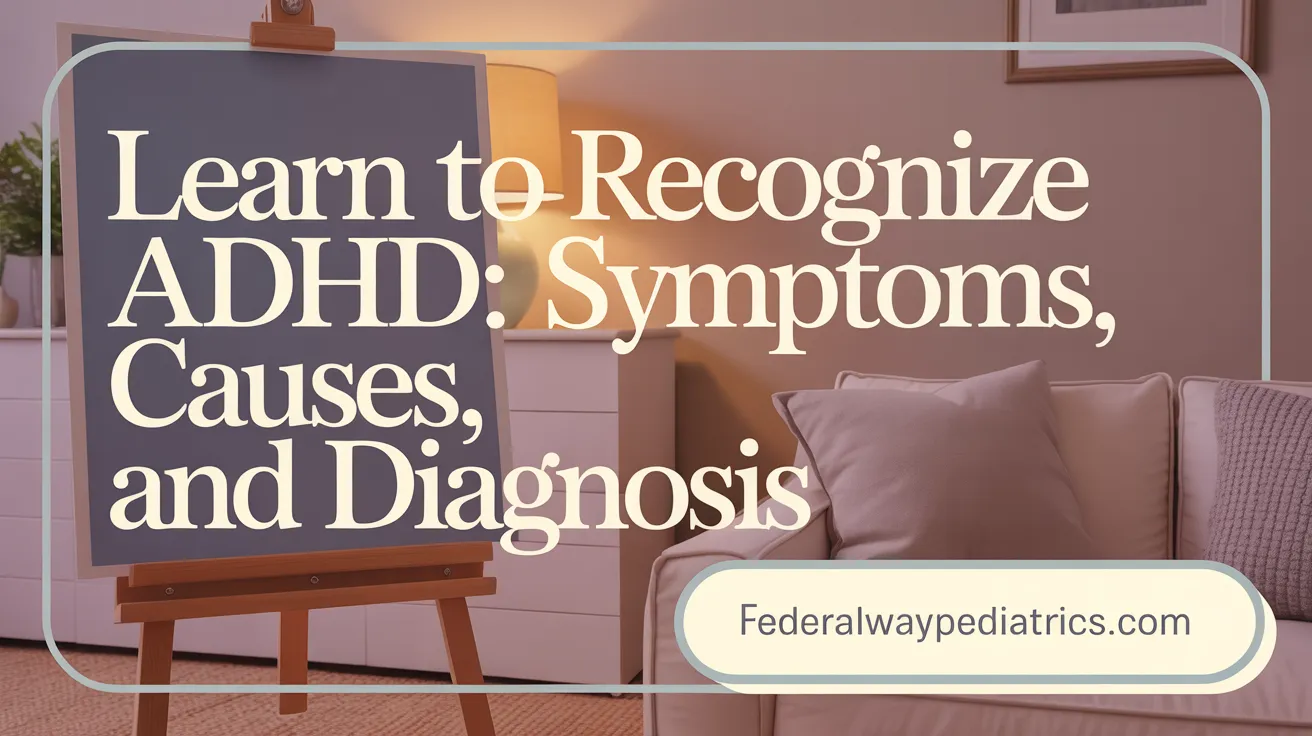
What are the common symptoms, causes, and diagnostic criteria for ADHD in children?
ADHD in children manifests as a neurodevelopmental disorder with distinctive symptoms of inattention, hyperactivity, and impulsivity. Children with ADHD often struggle to maintain focus, follow directions, and stay organized. They may be easily distracted, forgetful, or lose track of belongings. Hyperactivity is usually apparent through constant movement, such as fidgeting, climbing, or excessive talking. Impulsiveness leads to interrupting others, acting without thinking, and emotional outbursts.
The causes of ADHD are believed to be mainly hereditary, with strong genetic links suggested by family histories. Neurobiological differences also play a role, including alterations in brain structure and function, especially in areas responsible for regulation and impulse control. Environmental factors like prenatal exposure to toxins such as lead, maternal smoking, alcohol or drug use during pregnancy, and low birth weight can influence the risk (source).
Diagnosis relies on specific criteria outlined in the DSM-5. To confirm ADHD, a child must display at least six symptoms from either inattention or hyperactivity-impulsivity categories that have persisted for at least six months. These symptoms need to be present in two or more settings, such as at home and school, to distinguish ADHD from situational behavior. The symptoms must interfere with a child’s social, academic, or family life.
The diagnostic process includes comprehensive evaluations involving medical exams, behavioral assessments, and input from parents, teachers, and other caregivers. Since there are no definitive medical tests, diagnosis depends on observed behavior patterns aligned with DSM-5 criteria. Often, a team of healthcare and educational professionals collaborates to ensure accurate diagnosis and appropriate treatment plans.
Effective management combines behavioral therapies, parent training, school accommodations, and medications aimed at reducing symptoms and improving daily functioning.
Evidence-Based Treatments: Behavioral Interventions and Medication Options
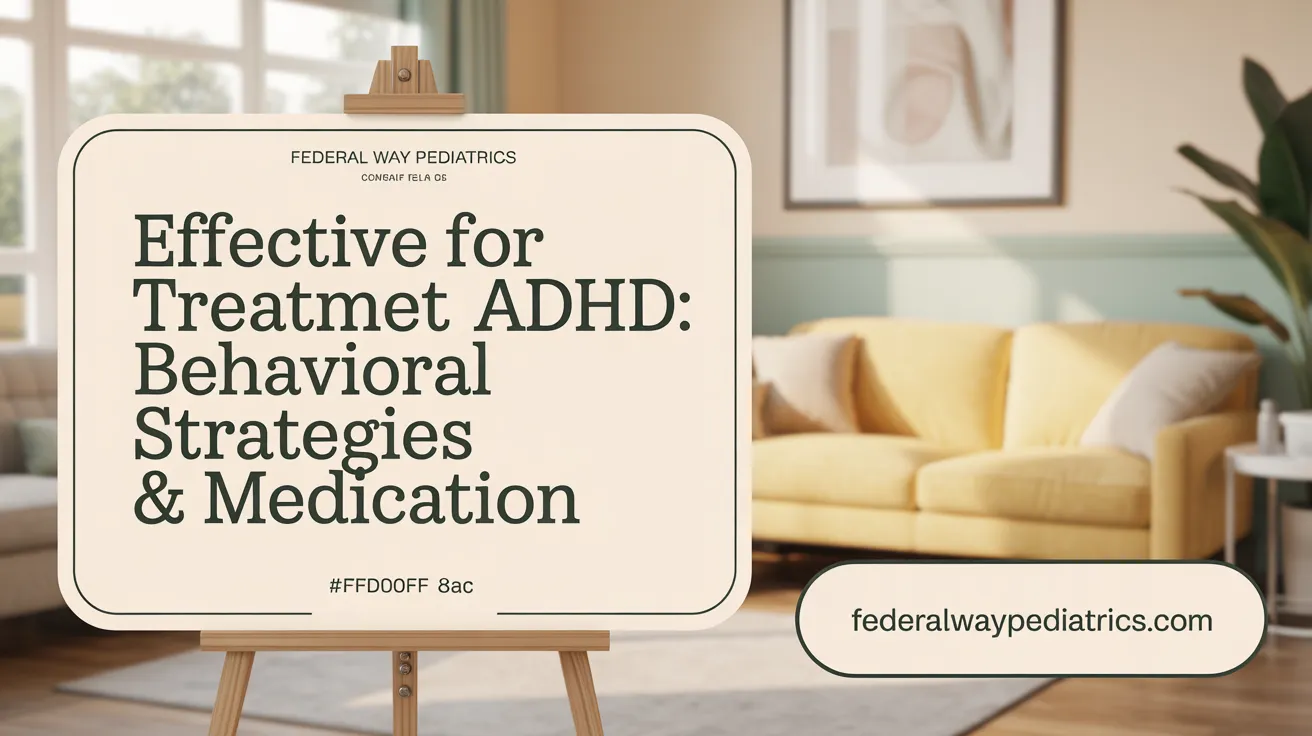
What are the evidence-based treatment options for pediatric ADHD, including behavioral therapies and medication?
Effective management of ADHD in children relies on a combination of behavioral therapies and medication, tailored to the child's age and specific needs. For very young children under age 6, professional guidelines recommend starting with parent training in behavior management. This approach involves teaching parents strategies to reinforce positive behaviors, establish routines, and reduce problematic behaviors through consistent discipline and praise. Such behavioral interventions have been shown to be as effective as medication in younger children and offer the benefit of fewer side effects.
In children aged 6 and older, evidence supports a combined treatment approach that includes medication—typically stimulant medications like methylphenidate or dextroamphetamine—and behavioral therapy. Medications help reduce core symptoms such as inattention, hyperactivity, and impulsivity, while behavioral interventions enhance social skills and adaptive functioning. These therapies include classroom management, social skills training, and parent coaching that reinforce positive behaviors. For detailed guidelines on these approaches, see ADHD treatment options by CDC and American Academy of Family Physicians overview.
Behavioral therapies are designed to teach children self-control and improve their ability to handle everyday challenges. Parent training programs are especially important because they empower caregivers with tools to support their child's development and manage behaviors effectively.
Medication choices are individualized based on the child's health profile, response to treatment, and side effect profile. Regular monitoring ensures safe and effective use, adjusting doses as needed. See HealthyChildren.org guide on determining ADHD medication treatments for medication guidance. The goal is to maximize symptom improvement while minimizing adverse effects.
Using a multimodal approach—combining behavioral interventions with medication—has been consistently supported by scientific research to provide the best outcomes for children with ADHD. This strategy improves not only symptom control but also social relationships, academic performance, and emotional well-being. Proper coordination among healthcare providers, parents, and teachers is essential for successful treatment planning and ongoing management, as outlined in resources like NIMH ADHD overview and CDC classroom strategies for ADHD.
Practical Strategies for Parents and Caregivers to Manage ADHD
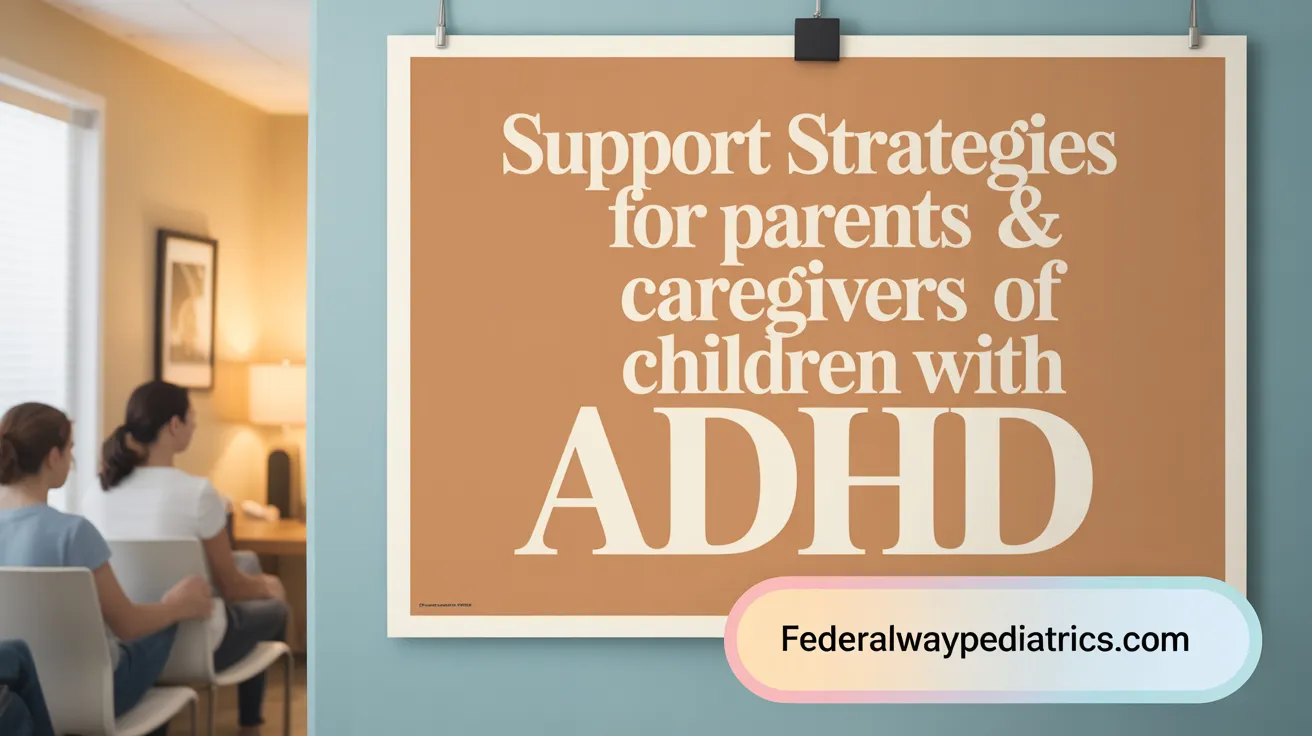
What strategies and tips can parents and caregivers use to effectively support and manage children with ADHD?
Managing a child with ADHD involves a combination of consistent routines, positive reinforcement, and healthy lifestyle habits. Establishing clear, simple daily routines creates predictability, helping children feel secure and understand expectations. Using visual schedules, timers, and organized spaces supports children in managing their tasks and reducing impulsivity (10 Tips for Supporting a Child with ADHD).
Behavior management techniques are essential. Parents and caregivers should focus on reinforcing positive behaviors through immediate praise and rewards, while applying consistent and age-appropriate consequences for undesirable actions. Structured discipline that emphasizes calmness, clarity, and fairness can help children learn self-control (Parenting a Child with ADHD, Parenting with ADHD Strategies, Parenting Tips).
Encouraging physical activity and outdoor play helps reduce hyperactivity and improve concentration. Prioritizing good sleep habits, such as regular bedtimes and calming pre-sleep routines, minimizes attention and behavioral challenges. A nutritious diet with balanced meals supports brain function and reduces impulsiveness (Strategies for Supporting Children with ADHD, Helping Children with ADHD).
Working closely with healthcare providers and educators ensures that children receive tailored support. Developing individualized education plans (IEPs) or 504 plans can provide classroom accommodations, while behavioral therapies reinforce skills learned at home (ADHD in the Classroom, Understanding ADHD, Identifying and Treating ADHD).
Supporting social skills and emotional well-being is equally important. Parents should foster their child's strengths, celebrate small successes, and provide unconditional love and encouragement. Teaching emotional regulation techniques like deep breathing or ‘Stop, Think, Act’ helps children manage big feelings (5 Strategies for Parents to Promote Independence and Emotional Growth for Children with ADHD, Parenting a Child With ADHD).
Lastly, parental self-care is vital. Managing caregiving stress through activities like exercising, seeking social support, or mindfulness practices helps parents maintain patience and effectiveness. Collaboration with professionals, ongoing education, and community resources further empower families to support children with ADHD effectively (Parenting with ADHD Strategies, Parenting a Child with ADHD).
In summary, a structured environment combined with positive interactions, healthy habits, and professional collaboration builds a solid foundation for children with ADHD to thrive socially, academically, and emotionally.
Supporting Learning: Educational Strategies and Accommodations in School
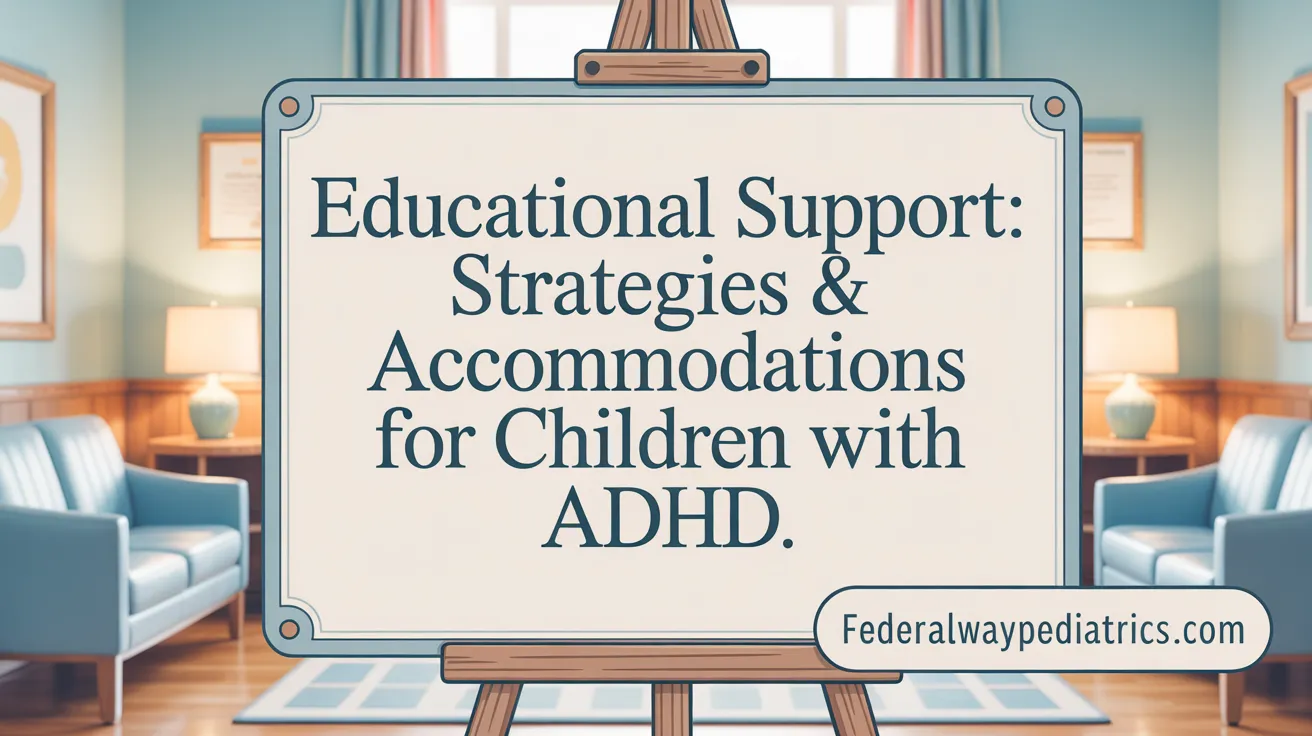
What educational strategies and accommodations can be implemented to support children with ADHD in school?
Supporting children with ADHD in the classroom involves a combination of tailored educational strategies and necessary accommodations. Schools often develop Individualized Education Programs (IEPs) or 504 Plans that address each child's unique needs, helping them succeed academically and socially.
Typical classroom accommodations include providing extra time for tests and assignments, preferential seating near the teacher or away from windows and doors, and scheduled movement or rest breaks to reduce restlessness. Environmental modifications such as minimizing noise, clutter, and visual distractions can significantly improve focus.
Behavioral classroom management techniques are crucial. These include implementing reward systems to reinforce positive behavior, using clear and simple instructions, providing visual cues like charts or checklists, and creating consistent routines. Use of visual aids and task breakdowns help children understand expectations and manage tasks more effectively.
Support in developing organizational skills is vital. Teachers can use tools like color-coded folders, planners, and timers to help children plan, prioritize, and complete assignments. Encouraging self-monitoring skills also fosters independence.
Collaborative efforts among parents, teachers, school psychologists, and specialized professionals ensure strategies are coordinated and adaptable. Regular communication allows for timely adjustments aligned with the child's progress.
Finally, balancing academic requirements with social-emotional support is essential. This includes teaching social skills through role-play, providing peer assistance, and creating a supportive classroom environment where students feel safe and valued.
By integrating these approaches, educational environments can become more inclusive, promoting both learning and positive social development for children with ADHD. For more information, refer to Strategies for Supporting Children with ADHD and ADHD support in the classroom.
Behavioral Management Techniques and Therapies Enhancing Outcomes
How can behavioral management techniques and behavioral therapies be used to improve outcomes for children with ADHD?
Behavioral management techniques and behavioral therapies serve as vital non-drug strategies to help children with ADHD improve their behavior and daily functioning. These approaches focus on modifying the child's environment and teaching new skills to foster better self-control, organization, and social interactions. For more detailed information on behavioral interventions, see Behavior therapy for young children with ADHD.
Parent training programs are a cornerstone of behavioral intervention. Through these programs, parents learn strategies such as positive reinforcement, consistent discipline, and establishing predictable routines. For example, rewarding specific positive behaviors encourages children to repeat those behaviors, which can reduce disruptive actions and strengthen parent-child relationships. Resources on parent training for ADHD provide comprehensive guidance on these approaches.
Structured routines and practical tools like checklists and reward charts are crucial. They help children with ADHD develop organizational skills and self-regulation, aiding them in managing tasks like homework, chores, and social interactions more effectively. See 10 tips for supporting a child with ADHD for strategies on organizing physical spaces and creating structured routines.
School-based interventions also play a significant role. Programs like Daily Report Cards provide immediate feedback and reinforcement for good behavior, both in the classroom and at home. These interventions support academic success and social skill development in multiple settings, helping children to generalize positive behaviors. Explore ADHD support in the classroom for strategies on classroom management and educational accommodations.
Combining behavioral therapies with pharmacological treatment often produces the best results, especially in more severe cases. While medication can effectively reduce core symptoms, behavioral strategies enhance emotional regulation, social skills, and self-esteem, addressing the broader challenges faced by children with ADHD. For information on combining behavioral treatment with medication, refer to the CDC ADHD treatment guidelines and American Academy of Family Physicians review on ADHD management.
In essence, these behavioral strategies help children learn to control impulses, follow routines, and build social relationships. Over time, they contribute to lasting improvements in behavior and family dynamics, equipping children with skills necessary for lifelong success. For additional parenting strategies and support, see Parenting a Child with ADHD and Helping children with ADHD succeed at home.
Parent Training and Support Resources to Empower Families
Effective management of ADHD in children often hinges on well-designed parent training programs and accessible support resources. Evidence-based parent training programs, such as Behavioral Parent Training (BPT), are considered the cornerstone of behavioral interventions. These programs include respected initiatives like Parent-Child Interaction Therapy (PCIT) and The Incredible Years, which equip parents with practical skills to reinforce positive behaviors, establish consistent discipline, create predictable routines, and improve communication. Such skills help children develop better self-control, social skills, and self-esteem. For detailed information on these approaches, see Parent Training for ADHD Overview and Behavior Therapy for Young Children with ADHD.
For children under 12, especially those younger than 6, behavioral parent training is recommended as the initial treatment approach before medication is considered. This strategy leverages the family's active involvement, making interventions more personalized and effective. Healthcare providers play a key role in referring families to these evidence-based programs and online training platforms, including resources offered by organizations such as CHADD and local Parent Training and Information Centers. The CDC also offers Behavior Therapy First for Young Children highlighting these recommendations.
Community support groups provide additional emotional and practical support, creating a network for sharing experiences and strategies. Many of these groups are accessible online, making it easier for families to connect regardless of location, as noted in resources like Supporting Social Skills in Children with ADHD and 10 Tips for Supporting a Child with ADHD.
Parent education not only improves behavioral outcomes for children but also enhances treatment adherence. When parents understand ADHD and are equipped with effective behavioral management techniques, they are more confident in handling daily challenges, which benefits the child's development. See Parenting a Child with ADHD and Parenting with ADHD Strategies for guidance.
Healthcare professionals, including pediatricians and mental health specialists, are essential in guiding parents through the process. They can tailor training recommendations, monitor progress, and provide ongoing support, ensuring that the parent-child relationship remains positive and productive. For clinical guidelines, consult the Clinical Practice Guideline for the Diagnosis and Treatment of ADHD and Diagnosis and Treatment of ADHD in Children.
In summary, integrating evidence-based parent training programs with community and professional resources provides a strong foundation for managing ADHD. This approach empowers families, improves treatment success, and fosters healthier developmental trajectories for children with ADHD. Additional strategies and expert insights are available at Strategies for Supporting Children with ADHD and Expert ADHD Information from Children's Hospital Boston.
Tailoring ADHD Management to Childhood Developmental Stages
ADHD management varies significantly across different childhood stages, reflecting the changing nature of symptoms and developmental challenges. In preschoolers, the emphasis is often on parent training and behavioral therapy, focusing on establishing routines, teaching positive behavior reinforcement, and improving parents' skills in managing hyperactivity and impulsivity. During this early phase, hyperactivity may decrease naturally over time, but attention difficulties and emotional regulation remain persistent concerns.
As children enter school age, treatment strategies expand to include both behavioral interventions and academic accommodations. School-based programs, such as organizational training and peer interventions, become integral, alongside possible medication use—most notably stimulants—to help improve concentration and social skills. This stage requires ongoing collaboration between parents, teachers, and healthcare providers to adapt strategies suited to the child's academic and social environment (ADHD in the Classroom, Managing ADHD in Children).
In adolescence, the focus shifts toward fostering independence, managing emerging social and emotional issues, and addressing co-occurring conditions like anxiety or depression. Behavior management continues, but there's increased importance on developing life skills, emotional regulation, and supporting decision-making. Medication, if used, may be adjusted to accommodate changing physiological needs and to ensure adherence (Parenting a Child With ADHD, Promoting Independence and Emotional Growth).
As children grow into adulthood, treatment plans should be further individualized, considering the long-term management of symptoms and comorbidities. Strategies include ongoing behavioral therapy, skills training, and medication when necessary. Recognizing that ADHD symptoms can evolve—such as hyperactivity waning but inattentiveness continuing—is vital for effective management (ADHD Overview and Treatment, Continued ADHD Management).
Overall, tailoring ADHD treatment across developmental stages involves periodic reassessment, understanding neurodevelopmental progress, and adjusting interventions to meet emerging needs. Early interventions set the foundation for adaptive skills that support successful transitions into adolescence and adult life, ensuring each stage’s unique challenges are effectively addressed (Clinical Practice Guideline for ADHD Diagnosis and Treatment).
Legal Rights and Educational Protections for Children with ADHD
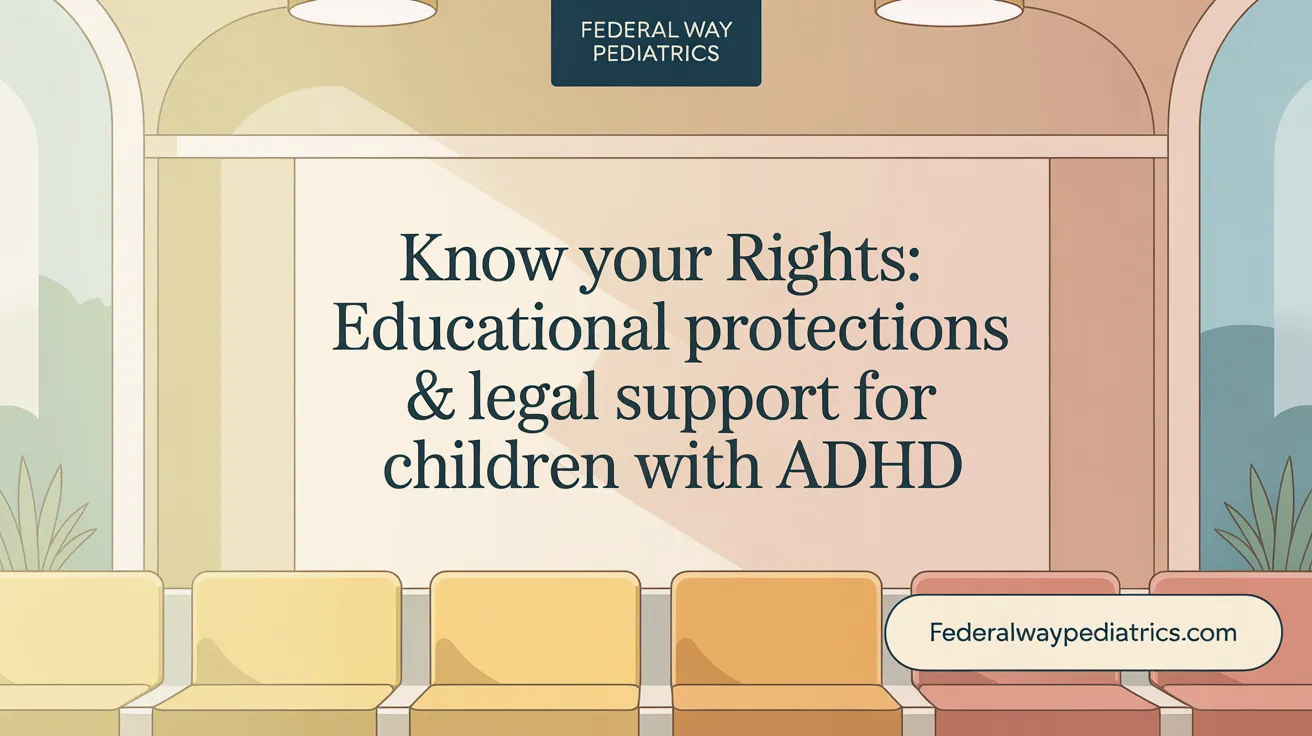 Children diagnosed with ADHD are safeguarded under federal laws that aim to promote equal access to education and appropriate support services. The two primary laws are the Individuals with Disabilities Education Act (IDEA) and Section 504 of the Rehabilitation Act. These laws require schools to provide accommodations and modifications tailored to each child's needs, ensuring they can participate fully in educational programs.
Children diagnosed with ADHD are safeguarded under federal laws that aim to promote equal access to education and appropriate support services. The two primary laws are the Individuals with Disabilities Education Act (IDEA) and Section 504 of the Rehabilitation Act. These laws require schools to provide accommodations and modifications tailored to each child's needs, ensuring they can participate fully in educational programs.
Under Section 504, students with ADHD who meet certain criteria are eligible for a 504 Plan. This plan typically includes adjustments such as extended time on tests, preferential seating, or environmental modifications like reduced distractions. Importantly, the evaluation process for eligibility is conducted at no cost to the family, and decisions are made based on the child's needs, not solely on whether medication is being used.
IDEA provides protections for children whose ADHD significantly impacts their learning, and those students may have an Individualized Education Program (IEP). An IEP is a detailed plan developed by a team of educators, specialists, and parents that outlines specific educational goals and the services needed, such as behavioral support or special teaching strategies. The goal is to place the child in the least restrictive environment while providing the necessary supports.
Parents and guardians have distinct rights under these laws. They can review their child's records, participate in decisions about assessments and placements, and appeal if they disagree with evaluations or services provided. This process ensures family involvement and advocacy, which are key to obtaining the appropriate accommodations. More detailed information is available in the Guide to Parenting a Child with ADHD by CHADD.
By understanding these protections, families can work proactively with schools to implement strategies that help children with ADHD succeed academically and socially. Ensuring compliance by schools with these legal requirements and safeguarding families' rights promotes an inclusive and supportive educational environment for children with ADHD.
Comprehensive Care and Advocacy for Children with ADHD
Managing ADHD in children requires a multidimensional approach involving early identification, evidence-based treatments, supportive home and school environments, and legal advocacy. Parents and caregivers play a crucial role in implementing behavioral strategies, collaborating with healthcare providers, and navigating educational supports to foster their child's success and well-being. Pediatric experts advocate for individualized treatment plans that evolve with the child's developmental stages and emphasize the importance of parent training and strengthening family resilience. With consistent care, understanding, and resources, children with ADHD can thrive academically, socially, and emotionally, paving the way for productive futures.
